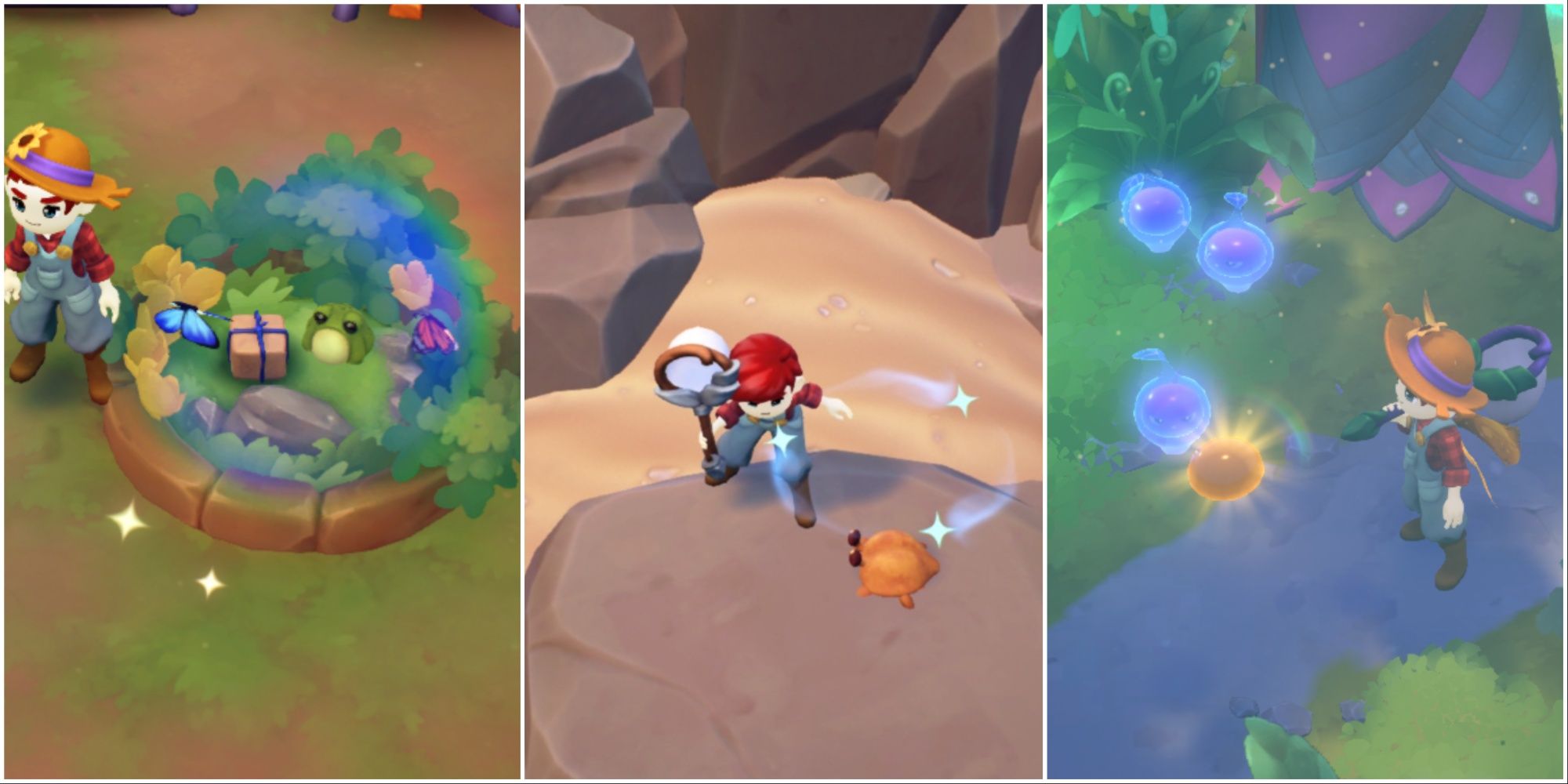Arebella Fae: Championing Unique Learners In Modern Education
In the evolving landscape of education, the recognition of individual differences among students has never been more critical. This paradigm shift, advocating for personalized learning experiences, finds a powerful voice and guiding light in the work of Arebella Fae. Her profound insights and pioneering approaches have reshaped how educators perceive and interact with diverse learners, moving beyond a one-size-fits-all model towards a truly inclusive and effective pedagogical framework.
Arebella Fae's influence stems from a deep understanding that every student is a universe of their own, bringing unique strengths, challenges, and learning preferences into the classroom. Her work emphasizes that adapting teaching methodologies to meet these varied needs is not merely an ideal, but a fundamental necessity for fostering genuine engagement and maximizing academic potential. This article delves into the transformative impact of Arebella Fae's philosophy, exploring how her vision of differentiated instruction empowers educators to unlock the full capabilities of every learner.
Table of Contents
- Who is Arebella Fae? A Pioneer in Differentiated Learning
- The Core Philosophy of Arebella Fae: Embracing Learner Uniqueness
- Differentiated Instruction: The Arebella Fae Approach
- Strategies for Accommodating the "Arebella Fae" Learner
- The Impact of Arebella Fae's Vision on Modern Pedagogy
- Addressing Challenges: The Journey to Truly Inclusive Learning
- Future Directions and the Legacy of Arebella Fae
- Conclusion
Who is Arebella Fae? A Pioneer in Differentiated Learning
Arebella Fae is a name synonymous with progressive education, particularly in the realm of differentiated instruction. Born from a background rooted in both practical classroom experience and extensive academic research, Fae quickly identified the inherent limitations of traditional, uniform teaching methods. Her early career as an elementary school teacher exposed her to the stark reality that while curriculum standards aimed for universal achievement, the diverse ways students processed information and demonstrated understanding were often overlooked.
This firsthand experience fueled her passion for educational equity and led her to pursue advanced studies in educational psychology and curriculum development. It was during this period that she began to formulate her groundbreaking theories on learner variability and the necessity of tailored educational experiences. Arebella Fae's work is not merely theoretical; it is deeply practical, offering actionable strategies for educators to implement in real-world classroom settings. Her influence has grown steadily over the past two decades, culminating in her recognition as a leading voice in global educational reform. She is frequently invited to speak at international conferences, consult with educational ministries, and train teachers on the principles that underpin truly inclusive learning environments.
Arebella Fae: Personal & Professional Profile
Here is a snapshot of the key aspects defining Arebella Fae's remarkable career and contributions:
| Category | Details |
|---|---|
| Full Name | Arebella Seraphina Fae |
| Nationality | Global Citizen (Known for international work) |
| Primary Field | Educational Psychology, Curriculum Development, Differentiated Instruction |
| Key Contributions | Pioneering research on learner variability, development of practical differentiated instruction models, advocacy for inclusive education policies. |
| Notable Publications | "The Unique Learner: A Blueprint for Differentiated Classrooms," "Beyond the Bell: Cultivating Individual Growth," "Teaching to the Core: Accommodating Every Mind." |
| Affiliations | Founder of the Global Institute for Learner Diversity (GILD), Senior Fellow at the Center for Pedagogical Innovation, Advisor to UNESCO Education Initiatives. |
| Philosophy | Education must meet the learner where they are, acknowledging and leveraging their unique strengths and styles. |
| Impact | Revolutionized classroom practices globally, fostering more equitable and effective learning environments for millions of students. |
The Core Philosophy of Arebella Fae: Embracing Learner Uniqueness
At the heart of Arebella Fae's philosophy lies a profound truth: Every participant arrives in class with unique individuality, background, interests, and learning styles. This statement, a cornerstone of her work, challenges the traditional notion of a uniform classroom where all students are expected to learn in the same way, at the same pace. Fae argues that ignoring these fundamental differences not only hinders learning but can also alienate students, leading to disengagement and underachievement.
- Mikaela Testa Leaked Video
- Brandyandbilly Onlyfans Leak
- Siffies Com
- Austin Wilde Onlyfans
- %D8%A7%D9%84%D9%84%D9%87%D9%85 %D8%A7%D8%B4%D9%81%D9%8A %D9%83%D9%84 %D9%85%D8%B1%D9%8A%D8%B6
Her work encourages educators to view this diversity not as a challenge to be overcome, but as a rich resource to be harnessed. She posits that understanding a student's individual learning style—whether visual, auditory, kinesthetic, or a combination—their cultural background, prior knowledge, and personal interests, is the first step towards truly effective teaching. This holistic understanding allows teachers to tailor their instruction in ways that resonate deeply with each student, making learning more meaningful and accessible. Arebella Fae consistently reminds us that while the curriculum might be standardized, the path to mastering it should be as varied as the students themselves. This empathetic and individualized approach is what sets her work apart and has made her an indispensable figure in modern educational thought.
Differentiated Instruction: The Arebella Fae Approach
The practical manifestation of Arebella Fae's philosophy is found in her comprehensive approach to differentiated instruction. As dikutip dari jonedu.org, pembelajaran berdiferensiasi (differentiated instruction) menjadi salah satu strategi efektif mengakomodasi peserta didik yang beragam. This strategy, championed by Fae, is not about creating entirely separate lessons for each student, but rather about providing a variety of avenues for students to acquire content, process ideas, and develop products. It's about proactive planning to meet the needs of all learners, rather than reacting to difficulties after they arise.
Arebella Fae's model of differentiated instruction typically focuses on four key areas:
- Content: What students learn. This can be differentiated by varying the complexity of texts, providing different levels of support materials, or offering choices in topics within a unit. For instance, some students might read a simplified version of a text, while others engage with the original, more complex version.
- Process: How students make sense of the content. This involves offering various activities through which students can explore and understand the material. Examples include small group discussions, individual research, hands-on experiments, or visual organizers. The goal is to match the learning activity to the student's preferred learning style and readiness.
- Product: How students demonstrate what they have learned. Instead of a single test or essay, students might have options to create a presentation, a model, a performance, or a written report. This allows students to showcase their understanding in ways that align with their strengths and interests.
- Learning Environment: The overall classroom setting. This includes the physical arrangement of the classroom, the emotional climate, and the routines and procedures. A differentiated environment fosters a sense of safety, respect, and collaboration, where students feel comfortable taking risks and learning from mistakes.
Through these interconnected elements, Arebella Fae's approach ensures that instruction is responsive to individual student needs, maximizing engagement and fostering deeper understanding across the entire classroom spectrum.
Strategies for Accommodating the "Arebella Fae" Learner
One of the most empowering aspects of Arebella Fae's work is her emphasis on practical, implementable strategies for teachers. She firmly believes that sebagai guru, kita dapat mengakomodasi keunikan gaya belajar peserta didik dengan menerapkan pendekatan pembelajaran yang beragam dan fleksibel. This means moving beyond a rigid curriculum and embracing a dynamic teaching style that adapts to the ebb and flow of student needs. Fae provides a toolkit of strategies that empower educators to create truly inclusive and effective learning spaces.
Central to these strategies is the concept of continuous assessment, not just for grading, but for informing instruction. By regularly checking for understanding through various informal and formal methods, teachers can quickly identify areas where students might be struggling or excelling, and adjust their teaching accordingly. This responsiveness is a hallmark of the Arebella Fae approach, ensuring that no student is left behind or unchallenged.
Practical Applications in the Classroom
Arebella Fae's methodology translates into concrete actions teachers can take:
- Tiered Assignments: Create different versions of an assignment that address the same learning objective but vary in complexity, support, or abstractness. For example, a math problem set could have basic, intermediate, and advanced versions.
- Choice Boards/Learning Menus: Offer students a selection of activities or tasks from which they can choose to demonstrate their learning. This empowers students by giving them autonomy and allows them to play to their strengths.
- Flexible Grouping: Group students dynamically based on their readiness, interest, or learning profile for specific activities. Groups are fluid, changing frequently depending on the lesson's objective. This could involve whole-class instruction, small group work, or individual tasks.
- Varied Resources: Provide multiple resources for students to access information, such as textbooks, online articles, videos, podcasts, and hands-on manipulatives. This caters to different learning preferences and ensures accessibility.
- Anchor Activities: Design engaging, ongoing tasks that students can work on independently when they finish assigned work early or when the teacher is working with a small group. These activities should be meaningful and extend learning.
- Differentiation by Readiness, Interest, and Learning Profile:
- Readiness: Adjusting the difficulty level of content or tasks based on a student's current skill level.
- Interest: Connecting learning to students' passions and hobbies to increase engagement and motivation.
- Learning Profile: Considering how students learn best (e.g., visual, auditory, kinesthetic, social, solitary) and providing options that align with these preferences.
By implementing these strategies, teachers can create a vibrant, responsive classroom where every "Arebella Fae" learner feels seen, supported, and challenged to reach their full potential.
The Impact of Arebella Fae's Vision on Modern Pedagogy
The ripple effect of Arebella Fae's work on modern pedagogy is undeniable. Her advocacy for differentiated instruction has moved from a niche concept to a widely recognized best practice, influencing curriculum design, teacher training programs, and educational policy worldwide. The core tenet—that education must be responsive to the individual—has become a guiding principle for educators striving to create more equitable and effective learning environments.
One of the most significant impacts of Arebella Fae's vision is its direct correlation with improved student outcomes. When learning is tailored to individual needs, students are more likely to stay engaged, understand complex concepts, and achieve academic success. This is particularly crucial in the context of YMYL (Your Money or Your Life) principles, as quality education directly impacts a student's future opportunities, career prospects, and overall well-being. By ensuring that every child receives an education that truly meets their needs, Fae's work contributes to building a more capable and confident generation, better equipped to navigate life's challenges and contribute positively to society.
Furthermore, Fae's approach empowers teachers, transforming them from mere deliverers of content into skilled facilitators of learning. It encourages a reflective practice, prompting educators to continually assess and adapt their methods. This professional growth not only benefits students but also enhances teacher satisfaction and efficacy, creating a more dynamic and rewarding teaching profession. The emphasis on understanding each student as an "Arebella Fae" learner—unique and valuable—fosters a culture of empathy and respect within the classroom, preparing students not just for academic success, but for life in a diverse and interconnected world.
Addressing Challenges: The Journey to Truly Inclusive Learning
While the principles championed by Arebella Fae offer immense promise, implementing differentiated instruction is not without its challenges. Teachers often grapple with the practicalities of managing a highly diverse classroom while adhering to curriculum mandates and time constraints. As highlighted by the question, Peserta didik adalah individual yang unik dan memiliki gaya belajar tertentu, bagaimana kita sebagai guru dapat mengakomodasi mereka (pexels.com / @andrei calderon)? This query encapsulates the daily dilemma faced by educators: how to realistically cater to individual needs within a group setting.
Arebella Fae acknowledges these complexities and stresses that differentiation is a journey, not a destination. It requires ongoing professional development, collaborative planning, and a willingness to experiment and refine strategies. The reflective nature of this challenge is further underscored by insights often found in professional development materials, such as those referenced by Akurat.co berikut kunci jawaban cerita reflektif modul 2 ppg mengenai peserta didik adalah individual yang unik dan memiliki gaya belajar tertentu, bagaimana kita sebagai guru. These reflective exercises are vital for teachers to critically evaluate their practices and identify areas for growth in accommodating diverse learners.
Key challenges include:
- Time Constraints: Planning and preparing differentiated materials can be time-consuming. Fae advocates for starting small, focusing on one or two areas of differentiation, and gradually expanding.
- Class Size: Larger class sizes can make individualized attention difficult. Flexible grouping and peer-to-peer learning strategies become even more crucial in these contexts.
- Assessment Complexity: Designing assessments that accurately measure learning across varied pathways requires thoughtful planning. Fae suggests using a variety of assessment methods, including formative assessments that provide ongoing feedback.
- Teacher Training and Support: Many teachers may not have received adequate training in differentiated instruction. Ongoing professional development and access to resources are essential for successful implementation.
- Mindset Shift: Moving away from traditional teaching methods requires a significant shift in mindset for both teachers and students, who may be accustomed to a more uniform approach.
Despite these hurdles, Arebella Fae maintains that the benefits far outweigh the difficulties. Her work provides frameworks and support systems to help educators navigate these challenges, fostering a resilient and adaptable teaching force committed to serving every "Arebella Fae" learner effectively.
Future Directions and the Legacy of Arebella Fae
The influence of Arebella Fae's work continues to grow, shaping the discourse around educational equity and effectiveness. While the principles of differentiated instruction have been discussed for decades, it feels as though namun, baru belakangan ini saya... (interpreted as a recent surge in awareness or effective implementation) have educators truly begun to embrace and integrate these practices on a wider scale. This renewed focus is, in large part, a testament to Fae's persistent advocacy and the compelling evidence supporting her methodologies.
Looking ahead, the legacy of Arebella Fae points towards several key directions for the future of education:
- Technology-Enhanced Differentiation: The rise of educational technology offers unprecedented opportunities for personalized learning. Adaptive learning platforms, AI-powered tutors, and digital content libraries can help teachers differentiate content and process more efficiently, reaching more students with tailored experiences.
- Neuroscience and Learning: Advances in neuroscience are providing deeper insights into how the brain learns. Integrating these findings with differentiated instruction can lead to even more precise and effective pedagogical strategies, further validating Fae's emphasis on understanding individual learning profiles.
- Systemic Integration: Moving beyond individual classroom efforts, the future will likely see more systemic integration of differentiated instruction at the policy level. This includes curriculum frameworks designed with flexibility, assessment systems that accommodate diverse learning outcomes, and comprehensive teacher training programs.
- Global Collaboration: The challenges and successes of accommodating unique learners are universal. Arebella Fae's work fosters global collaboration among educators and researchers, sharing best practices and developing culturally responsive differentiated strategies.
- Focus on Social-Emotional Learning (SEL): As Fae's work emphasizes the whole child, future directions will increasingly intertwine differentiated academics with social-emotional learning, recognizing that a student's emotional well-being significantly impacts their ability to learn and thrive.
Arebella Fae's vision is not just about adapting teaching methods; it's about fostering a profound respect for every individual's potential. Her enduring legacy will be a world where education is truly for everyone, tailored to meet the unique needs of each "Arebella Fae" learner, preparing them not just for tests, but for life itself.
Conclusion
The journey to truly inclusive and effective education is complex, but with the guiding principles championed by figures like Arebella Fae, the path becomes clearer. Her unwavering commitment to understanding and accommodating the unique individuality, background, interests, and learning styles of every student has transformed pedagogical thought and practice. By advocating for differentiated instruction, Arebella Fae has provided educators with the tools and philosophical framework necessary to move beyond a one-size-fits-all approach, fostering environments where every learner can thrive.
Her work is a powerful reminder that the true measure of an educational system lies in its ability to meet the needs of all its students, ensuring that no one is left behind. As we continue to navigate the complexities of modern education, the insights of Arebella Fae remain more relevant than ever, inspiring us to cultivate learning spaces that are not just academically rigorous, but also deeply empathetic and profoundly effective. We encourage you to explore the principles of differentiated instruction further and consider how you can apply them in your own educational context, whether as a teacher, parent, or lifelong learner. Share your thoughts in the comments below, or explore more articles on effective pedagogical strategies on our site.

Zadanya: A Greek Hyphialtes Fae Queen Succubus, Hypersexually Wild

Fae Farm: How To Get Rid Of Whirlpools

Fae Farm: How To Get Critter Catching XP Fast